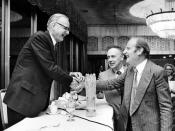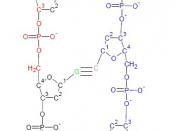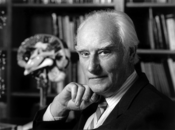I intend to present a scholarly paper critiquing "What Mad Pursuit" by Francis Crick. The following pages answer and explore questions asked from the 'Physics 40S Book Review' sheet. Opinions expressed towards the author are not intended to be negative, just critical.
After reading over this biography/non-fiction piece of literature, the theme of "What Mad Pursuit" is clear. However, the theme can be found even before Chapter 1. Francis Crick states himself that "the most important theme of the book is natural selection," (Crick, pg. 5) which of course I knew of, but to no overly scientific degree. It should be noted Crick couldn't have said it better, and I came to realize, after learning about it for half the book, how right he was by saying 'natural selection' was the theme. Natural selection is the process of turning rare, random genetic alterations of an organism, into common traits.
For instance, [If a fruit fly with four legs, after a genetic alteration, will, on average, leave more offspring than it would otherwise do....In favourable cases every individual will have come to possess the improved version of the gene. The older version will have been eliminated.] (Crick, pg. 26)
Francis Crick uses a slightly repetitive style, with an unusual amount of detail to less-scientific sub-plots throughout the book. These caught my attention, generally because anything different than the otherwise continuous science hurled at the reader was a life-saving treat, such as when introducing DNA: [DNA was not always a familiar term, but shortly after lapel buttons came into style Paul Doty was in New York and saw one with "DNA" written on it. Thinking it must refer to something else, he asked the vendor what it meant. "Get with it, Bud, dat's the gene."] (Crick, pg. 63)...


